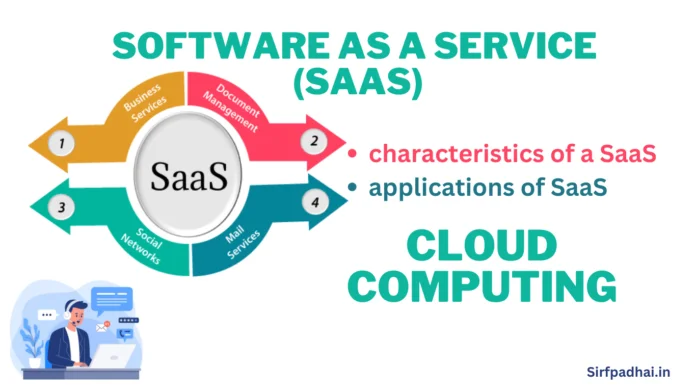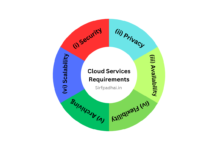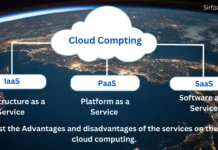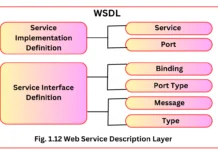Software as a service (SaaS) in cloud computing
Software as a service (SaaS) is a cloud computing model that delivers applications over the Internet. This has all the advantages for businesses of everything on a service model. Instead of having to deal with buying, installing, updating, and maintaining infrastructure, companies can directly opt for the on-demand usage of applications furnished by service providers on a subscription basis. SaaS provides speed, scale, and cost benefits alongside collaboration; it is a superb solution for individual users and corporate users as well.
What do you understand by SaaS?
The concept of SaaS is precedent to cloud computing and started to circulate at the end of the 90s. SaaS is a software delivery model which offers access to applications using the Internet. It gives a way to free users from complex hardware and software management by leaving such tasks to third parties, who create applications accessible to multiple users by a Web browser. Here, customers do not install anything on their premises. Also, they do not pay considerable upfront costs to purchase the software and the required licenses. They simply access the application Website, enter their credentials and billing details, and can instantly use the application that can be further customized for their requirements. The infrastructure maintains the specific details and characteristics of each customer’s application and makes available when required on the provider side.
The SaaS model is useful for applications that can be adjusted to specific needs with little further customization and serving a variety of users. This requirement characterizes SaaS as a one-to-many software delivery model. In a one-to-many software delivery model, an application is shared across several users. This is the case of Customer Relationship Management (CRM) and Enterprise Resource Planning (ERP) applications that form general requirements for almost all businesses. There will be similar requirements for the basic characteristics related to CRM and ERP in every enterprise, different requirements can be met with further customization. This scenario makes easy the development of software platforms offering a set of characteristics and supporting specialization and ease of integration of new components.
It constitutes the perfect candidate for hosted solutions, because the applications provided to the user are the same, and the applications itself give means to the users to shape itself on the basis of their requirements. Consequently, SaaS applications are naturally multi-tenant, which is a characteristic of SaaS. This characteristic enables providers to centralize and sustain the effort of managing large hardware infrastructures, optimizing resources by sharing the costs among the large user base and maintaining and upgrading applications transparently to the users. Such costs constitute a minimal fraction of the usage fee paid for the software on the customer side.
The SaaS approach resides on top of the cloud computing stack. It fits into the cloud computing vision denoted by the acronym XaaS-everything as a service. Applications are provided as a service with SaaS. In the beginning, the SaaS model was useful only for lead users and early adopters. After cloud computing, there has been an increasing acceptance of SaaS as a feasible software delivery model. This results in the development of SaaS 2.0, which does not give a new technology but changes the manner in which SaaS is used.
Write down the essential characteristics of a SaaS solution.
Like other forms of cloud computing, it is important to ensure that solutions sold as SaaS in fact comply with generally accepted definitions of cloud computing. Some defining characteristics of SaaS include-
(i) Web access to commercial software.
(ii) Software is managed from a central location.
(iii) Software delivered in a “one to many” model.
(iv) User not required to handle software upgrades and patches.
(v) Application Programming Interfaces (APIs) allow for integration between different pieces of software.
Discuss some applications of SaaS solutions.
The most popular SaaS applications are CRM, ERP and social networking. The most successful and popular example of CRM service is SalesForce.com, which builds on top of the Force.com platform. SalesForce.com provides either a programming language or a visual environment to organize components together for creating applications. It offers a variety of services for applications such as customer relationship and human resource management, enterprise resource planning, and several other features. Apart from the basic features, the integration with third-party applications improves the value of SalesForce.com. Customers can search, publish, and integrate new services and features into their existing applications, particularly, through AppExchange. AppExchange makes SalesForce.com absolutely extensible and customizable. Similar solutions are provided by RightNow and NetSuite.
Social networking applications like Orkut, and Facebook and professional networking such as Linkedin constitute an another important class of SasS applications. Besides, the basic features of networking, SaaS applications enable incorporating and extending their capabilities by integrating third-party applications. For the hosting platform, SaaS applications can be developed as plug-ins and presented to users so they can choose which applications they would like to add to their profiles. Consequently, the integrated applications get full access to the network of contacts and the user profile data.








